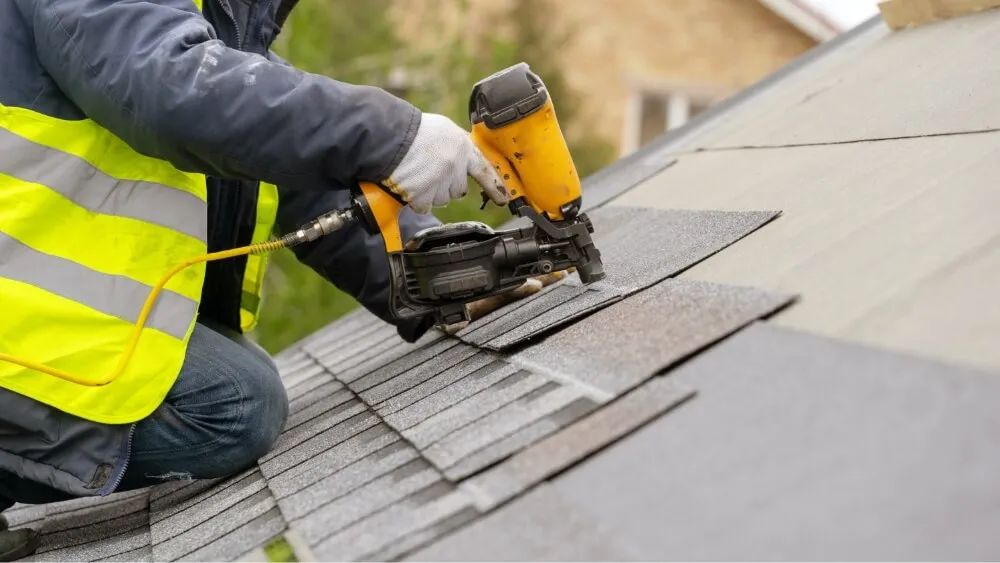How to Review Different Roof Covering Alternatives for Your Structure Requirements
Reviewing roofing options for your structure calls for a detailed method that takes into consideration different variables such as the intended usage of the framework, regional environment problems, and product attributes - Roofer. It is essential to weigh the advantages and drawbacks of different roof types, from asphalt tiles to steel and clay floor tiles, while additionally factoring in preliminary expenses and long-lasting upkeep.
Assessing Your Structure's Demands
To successfully review roofing alternatives, start by extensively evaluating your structure's requirements. Start by thinking about the building's planned usage, as different frameworks might require differing roof specs. For circumstances, domestic roof coverings usually prioritize appearances and insulation, while commercial buildings may concentrate on toughness and load-bearing capacity.
Next, evaluate the regional climate conditions that will influence roof performance. Elements such as temperature level variations, rainfall degrees, and wind patterns can affect product choice and design. A roof covering system that succeeds in a temperate climate might not execute too in areas susceptible to heavy snowfall or severe warm.
Furthermore, analyze the structural stability of your building. Guarantee that the existing framework can support the picked roofing materials, particularly if thinking about much heavier choices. It is also vital to examine any kind of regional structure codes or laws that may determine particular demands for roof.

Contrasting Roof Products
When an extensive assessment of your building's demands has actually been completed, the following action involves comparing different roof covering materials. Each material uses distinct advantages and drawbacks, making it important to align your choice with your specific needs and conditions.
Asphalt shingles are commonly recognized for their price and convenience of installation, making them a prominent choice for household structures. On the various other hand, metal roofing, recognized for its toughness and longevity, can hold up against severe climate problems however might come with a greater preliminary financial investment.
Clay and concrete tiles offer excellent thermal insulation and aesthetic appeal, especially for Mediterranean-style style, yet they need an even more durable structural assistance because of their weight. Timber trembles offer an all-natural look and excellent insulation homes but might require a lot more maintenance and are at risk to fire threats.
Evaluating Expense and Spending Plan
Examining your roofing alternatives requires a cautious examination of price and spending plan factors to consider. The overall budget plan for a roof job comprises numerous variables, consisting of material costs, labor costs, upkeep, and possible long-lasting financial savings. It is necessary to establish a clear budget prior to exploring certain roofing products, as this will guide the decision-making procedure and aid you prevent overspending.
Begin by getting quotes from numerous specialists to comprehend labor expenses in your area. Ensure that these quotes include all essential services, such as elimination of the old roof covering, setup, and any extra features, like insulation or ventilation improvements - Roofer. Next off, examine the price of various roofing products, taking right into account both preliminary installment expenses and expected life-span

Comprehending Energy Performance
Energy effectiveness plays a crucial duty in the choice of roofing products and systems, significantly impacting both energy consumption and total convenience within a structure. A well-chosen roof covering can improve thermal performance, lowering the need for heating and cooling down systems, which in turn decreases power bills and reduces environmental impact.
When reviewing roof covering alternatives, take into consideration products that reflect instead than soak up warmth. Additionally, appropriate insulation and air flow are vital to enhance the energy effectiveness of the entire roof covering system.
An additional important factor is the roof's long life and upkeep requirements. Resilient materials that need less regular replacement contribute to long-lasting energy financial savings. Moreover, the energy effectiveness of a roof covering system can additionally be examined through its compliance with recognized sustainability rankings such as power STAR or LEED.
Thinking About Aesthetic Charm
A roof's aesthetic allure significantly influences the total appearance of a building, complementing its architectural style and improving aesthetic charm. Roofing Contractor. When assessing roof covering choices, it is important to think about how the selected Click This Link material, color, and design will harmonize with the existing framework and neighborhood. A well-designed roof can raise even the simplest of structures, changing them into visual centerpieces
Various roof covering products provide numerous visual qualities. For example, traditional shingles might stimulate a classic charm, while steel roof covering can give a contemporary, smooth appearance. Furthermore, the color of the roofing material plays an important function; lighter shades can make a building appear even more spacious, while darker tones may develop a cozier ambiance.
Furthermore, building components, such as dormers and eaves, can boost the roof's visual effect. It is a good idea to seek advice from professional developers or engineers to make certain the chosen roofing alternative aligns with the overall layout intent. Eventually, a roof covering ought to not only offer functional benefits yet additionally contribute positively to the structure's aesthetic, reflecting the owner's taste and the character of the surrounding environment.
Verdict
